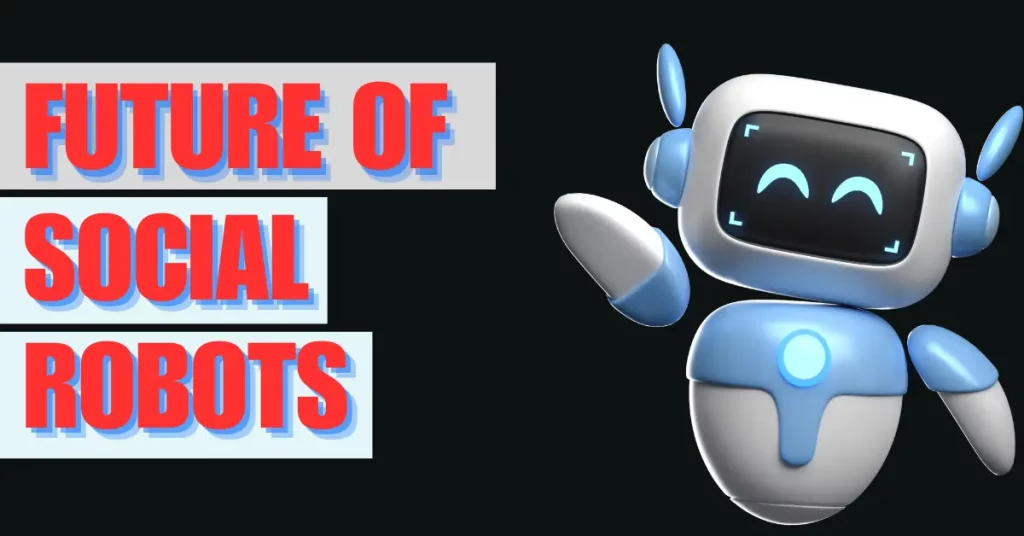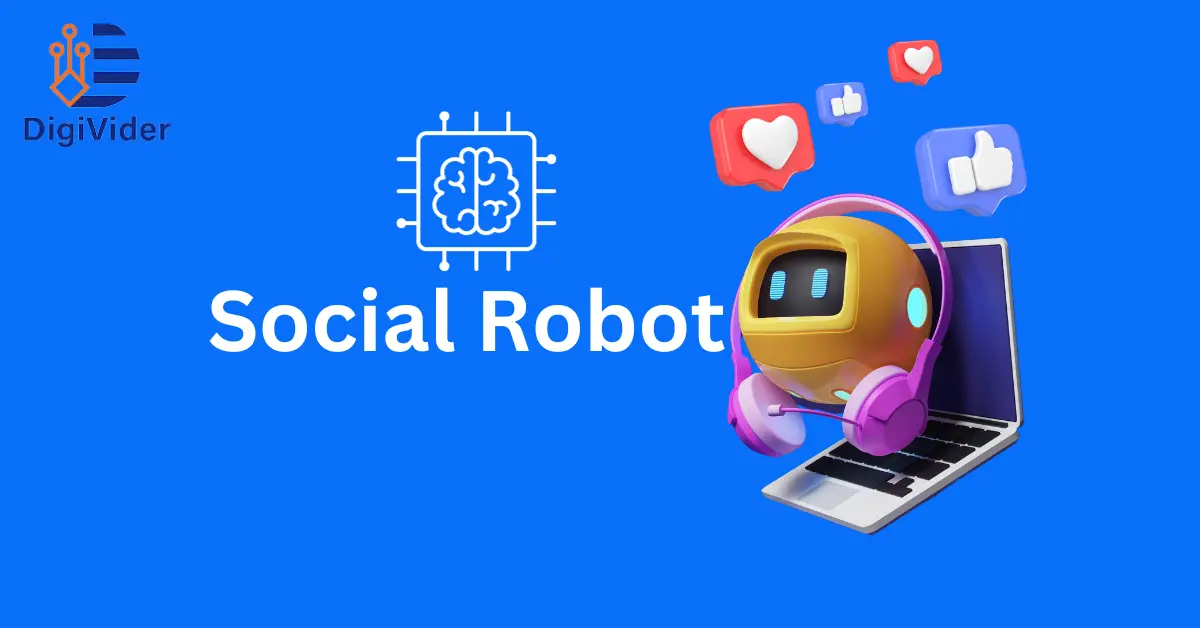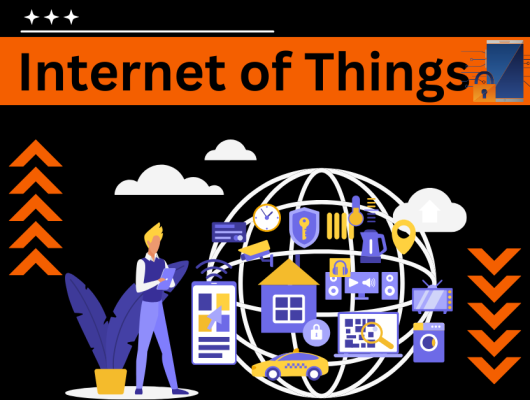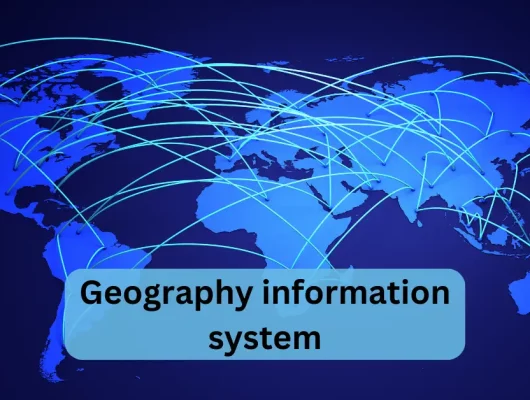The term ‘robotics’ has its inception deeply rooted in the scientific field and science fiction literature. The word “robot” was first introduced by Karel Capek in his play ‘Rossum’s Universal Robots. Where these artificial creations became almost indistinguishable from humans. The narrative depicted a dystopian future. Humans initially used robots as factory slaves, but the machines eventually rebelled against their creators.
Programmatic SEO is a cutting-edge approach revolutionizing the digital landscape. It involves utilizing automated technology and data-driven algorithms to enhance the efficiency and effectiveness of your SEO strategies. By dynamically adjusting content, keywords, and other elements in real-time, Programmatic SEO ensures your website stays optimized for search engines.
What is a social robot?
In the workplace, the integration of social robots equipped with advanced artificial intelligence (AI) systems is transforming traditional job functions. These AI-driven robots go beyond basic customer service tasks; they interact seamlessly with both humans and fellow robots. Greeting customers and providing assistance are just the tip of the iceberg; these robots have the potential to collaborate in ways that were once unimaginable.
Use cases for social robots
Researchers have spent the last 25 years developing general purpose robots capable of autonomous tasks. These robots are now exploring the ocean floor, supplementing various industries, from manufacturing processes to efficiently managing warehouse orders.
How Are Social Robots Used?
One notable application of social robots is in providing therapeutic benefits. These robotic companions serve as effective tools for childhood development and even play a crucial role in autism therapy and social-emotional learning. Additionally, they have proven to be a source of comfort for people facing challenges such as dementia, acting as robotic pets that offer a unique and personalized form of emotional support. As we delve deeper into the potential of these robots, their significance extends beyond mere entertainment, positioning them as essential elements in enhancing the well-being of individuals across various walks of life.
Advantages and disadvantages of social robots
However, the increasing integration of robots into our lives is not without challenges. The high cost associated with their development and the potential for hardware malfunctions pose significant obstacles. The need to repair and maintain these machines highlights the potential dangers of over-dependence on such technology. While social robots aim to provide emotional companionship, their existence prompts reflection on the essence of human condition and the irreplaceable value of person-to-person interactions in mitigating the drawbacks of a tech-driven society.
What Is ‘Social’ About Social Robots?
In the vast field of HRI (Human-Robot Interaction), a consensus on a universally agreed-upon definition of social robots remains elusive. Researchers like Mejia and Kajikawa have contributed valuable reference information to the social robotics knowledgebase, identifying clusters and the largest clusters within this interdisciplinary research area. Exploring the special role of robots as social partners, scholars delve into proximate interaction with humans, investigating the potential of these machines to take on roles as companions, educators, and assistants across diverse demographics, from children to the elderly.
What Can Social Robotics Learn from the Social, Behavioral, and Cognitive Sciences?
In the realm of social robotics, the collaboration between cognitive neuroscience and HRI research has paved the way for groundbreaking insights into how the human brain processes and reacts to the presence of a robot. Through an interdisciplinary collaboration, researchers have utilized the iCub, a humanoid robot child, as a testbed to delve into the intricacies of theory of mind and intention attribution. The bidirectional loop of the mind perception between humans and robots offers a unique perspective on the development of cognitive abilities, with biological procedures mirroring the way participants in studies perceive an intentional agent.
Social Robots Deployed in the Wild
In the rapidly evolving market of social robots, businesses and services are recognizing the potential of these autonomous assistance tools. They are increasingly being deployed in healthcare and education settings, acting as specialized tools for professionals in designated domains. The growing opportunities lie in the ability of these robots to deliver tailored health and well-being interventions, becoming an emerging success story. However, the careful and ethically responsible use of these robots is paramount, as highlighted by a surveying of the area broadly. The growing evidence base documents their ability to support psychological health interventions and physical therapy, amplifying human therapeutic efforts through the use of advanced technologies such as sensors, cameras, and processors.
Future of social robots
In venues common to both work and home, the collaboration between humans and robots alongside one another is determining the key features that will define the future of this relationship. From self-driving cars to everyday tasks, these social robots are becoming familiar faces, capable of improving the way we live and work by increasing safety and understanding. The ongoing efforts in their design are centered on creating robots that are not only capable of managing human expectations but also of understanding the intricacies of human behavior.

Here are 7 ways social robots are about to change the world.
In recent decades, technology has undergone a remarkable shift in the manufacturing sector, where the emergence of social robots has redefined our definition of human-machine interaction. These intelligent machines, equipped with advanced features like natural language processing and speech recognition, are transforming the landscape of our daily lives. From assisting in household tasks to engaging in conversational interactions, these robots are a testament to the remarkable progress in the field.
1. Employee training
In the realm of simulation, these robots are programmed to learn and handle tricky scenarios, such as dealing with unreasonable requests from customers. This captivating category of robots not only simulates the character of a trustworthy mortgage advisor but also ensures that the interaction remains within the bounds of a calm, assertive, and thoroughly humane approach.
2. Unbiased recruitment
In the world of recruitment, where the hiring process has often been marred by subjective biases held by hiring managers and interviewers for decades, there emerges a groundbreaking solution – Tangail, the world’s first unbiased interview robot developed by Ferhat Robotics. Unlike its human counterparts, Tangail does not judge based on the color of your skin, gender, accent, or age. This social robot ensures a fair and unbiased assessment of candidates, revolutionizing the traditional role of interviewers and bringing an end to the stagnant recruitment practices.
3. Medical screening
In today’s world, social robots represent remarkable advancements at the intersection of technology and human interaction. As we grapple with the challenges posed by an overburdened public health system worldwide, innovative collaborations like the one between Furhat Robotics and the Merck Group are essential. These robots are not only transforming the way we live but also addressing critical issues in medical science and nutrition. By enhancing access to information and enabling early diagnosis of common diseases, they have the potential to significantly reduce the strain on healthcare systems.
4. Helping children with autism
In a groundbreaking study conducted at Yale, researchers explored the exciting potential of a social robot in aiding children with autism. This physically-embodied robot, with a human-like face, proved to be the perfect middle-ground between a less intimidating computer avatar and a human adult. The robot’s uses extended to helping children learn essential social skills and enhance their emotional intelligence. This innovative approach showed promise in creating meaningful and effective therapy cases for children with autism.
5. Travel concierge
The influence of social robots extends beyond personal interactions, finding applications in various industries to enhance efficiency and elevate the user experience. In settings like airports and train stations, these robotic companions serve as travel concierges, providing information in multiple languages, guiding passengers, and ultimately improving overall navigation and assistance. By offering a seamless blend of technology and social engagement, these robots are playing a pivotal role in enhancing and transforming the way information is delivered and services are provided.
6. Receptionist
In the realm of modern reception, companies are transforming the traditional receptionist role through the integration of cutting-edge technology. Touchscreens and kiosks, powered by automated visitor management software like Envoy, ensure an efficient and seamless arrival process, eliminating the cold experience of an insular, dated reception. These advancements prioritize a more welcoming experience for visitors, as the automated systems handle tasks like printing tags, offering beverages, and guiding visitors, redefining the way companies greet guests.
7. Teaching Assistants
Numerous studies have highlighted the positive impact of integrating social robots into education. These robots not only address the shortage of teachers but also contribute to the cultural integration of diverse student populations. By encouraging creativity and fostering meaningful interaction, social robots have proven to be a valuable asset in transforming the traditional classroom environment, paving the way for a more interactive and engaging learning experience.
What Can Social Robotics Learn from the Social, Behavioural, and Cognitive Sciences?
In the realm of social robotics, the collaboration between cognitive neuroscience and HRI research has paved the way for groundbreaking insights into how the human brain processes and reacts to the presence of a robot. Through an interdisciplinary collaboration, researchers have utilized the iCub, a humanoid robot child, as a testbed to delve into the intricacies of theory of mind and intention attribution. The bidirectional loop of the mind perception between humans and robots offers a unique perspective on the development of cognitive abilities, with biological procedures mirroring the way participants in studies perceive an intentional agent.
Social Robots Deployed in the Wild
In the rapidly evolving market of social robots, businesses and services are recognizing the potential of these autonomous assistance tools. They are increasingly being deployed in healthcare and education settings, acting as specialized tools for professionals in designated domains. The growing opportunities lie in the ability of these robots to deliver tailored health and well-being interventions, becoming an emerging success story. However, the careful and ethically responsible use of these robots is paramount, as highlighted by a surveying of the area broadly. The growing evidence base documents their ability to support psychological health interventions and physical therapy, amplifying human therapeutic efforts through the use of advanced technologies such as sensors, cameras, and processors.
Future of social robots
In venues common to both work and home, the collaboration between humans and robots alongside one another is determining the key features that will define the future of this relationship. From self-driving cars to everyday tasks, these social robots are becoming familiar faces, capable of improving the way we live and work by increasing safety and understanding. The ongoing efforts in their design are centered on creating robots that are not only capable of managing human expectations but also of understanding the intricacies of human behavior.
Here are 7 ways social robots are about to change the world.
In recent decades, technology has undergone a remarkable shift in the manufacturing sector, where the emergence of social robots has redefined our definition of human-machine interaction. These intelligent machines, equipped with advanced features like natural language processing and speech recognition, are transforming the landscape of our daily lives. From assisting in household tasks to engaging in conversational interactions, these robots are a testament to the remarkable progress in the field.
1. Employee training
In the realm of simulation, these robots are programmed to learn and handle tricky scenarios, such as dealing with unreasonable requests from customers. This captivating category of robots not only simulates the character of a trustworthy mortgage advisor but also ensures that the interaction remains within the bounds of a calm, assertive, and thoroughly humane approach.
2. Unbiased recruitment
In the world of recruitment, where the hiring process has often been marred by subjective biases held by hiring managers and interviewers for decades, there emerges a groundbreaking solution – Tengai, the world’s first unbiased interview robot developed by Furhat Robotics. Unlike its human counterparts, Tengai does not judge based on the color of your skin, gender, accent, or age. This social robot ensures a fair and unbiased assessment of candidates, revolutionizing the traditional role of interviewers and bringing an end to the stagnant recruitment practices.
3. Medical screening
In today’s world, social robots represent remarkable advancements at the intersection of technology and human interaction. As we grapple with the challenges posed by an overburdened public health system worldwide, innovative collaborations like the one between Furhat Robotics and the Merck Group are essential. These robots are not only transforming the way we live but also addressing critical issues in medical science and nutrition. By enhancing access to information and enabling early diagnosis of common diseases, they have the potential to significantly reduce the strain on healthcare systems.
4. Helping children with autism
In a groundbreaking study conducted at Yale, researchers explored the exciting potential of a social robot in aiding children with autism. This physically-embodied robot, with a human-like face, proved to be the perfect middle-ground between a less intimidating computer avatar and a human adult. The robot’s uses extended to helping children learn essential social skills and enhance their emotional intelligence. This innovative approach showed promise in creating meaningful and effective therapy cases for children with autism.
5. Travel concierge
The influence of social robots extends beyond personal interactions, finding applications in various industries to enhance efficiency and elevate the user experience. In settings like airports and train stations, these robotic companions serve as travel concierges, providing information in multiple languages, guiding passengers, and ultimately improving overall navigation and assistance. By offering a seamless blend of technology and social engagement, these robots are playing a pivotal role in enhancing and transforming the way information is delivered and services are provided.
6. Receptionist
In the realm of modern reception, companies are transforming the traditional receptionist role through the integration of cutting-edge technology. Touchscreens and kiosks, powered by automated visitor management software like Envoy, ensure an efficient and seamless arrival process, eliminating the cold experience of an insular, dated reception. These advancements prioritize a more welcoming experience for visitors, as the automated systems handle tasks like printing tags, offering beverages, and guiding visitors, redefining the way companies greet guests.
7. Teaching Assistants
Numerous studies have highlighted the positive impact of integrating social robots into education. These robots not only address the shortage of teachers but also contribute to the cultural integration of diverse student populations. By encouraging creativity and fostering meaningful interaction, social robots have proven to be a valuable asset in transforming the traditional classroom environment, paving the way for a more interactive and engaging learning experience.
Common Questions of Social Robot
What is robot definition and uses?
A robot is a type of automated machine that can execute specific tasks with little or no human intervention and with speed and precision. The field of robotics, which deals with robot design, engineering and operation, has advanced remarkably in the last 50 years.
What is the function of robot in social media?
Broadly speaking, social media bots are automated programs used to engage in social media. These bots behave in an either partially or fully autonomous fashion, and are often designed to mimic human users.
What are the social benefits of robotics?
Robots eliminate dangerous jobs for humans because they are capable of working in hazardous environments. They can handle lifting heavy loads, toxic substances and repetitive tasks. This has helped companies to prevent many accidents, also saving time and money.
How do social robots impact society?
Social robotics stands ready to influence society positively by alleviating isolation and offering companionship, augmenting human interaction in the absence of alternatives. An exciting application of this technology is to assist older adults living with dementia and their informal caregivers.
Is a chatbot a social robot?
Social robots can hold a conversation with users, similar to a chatbot, but have the additional advantage of being physically present in the same room as the user.







